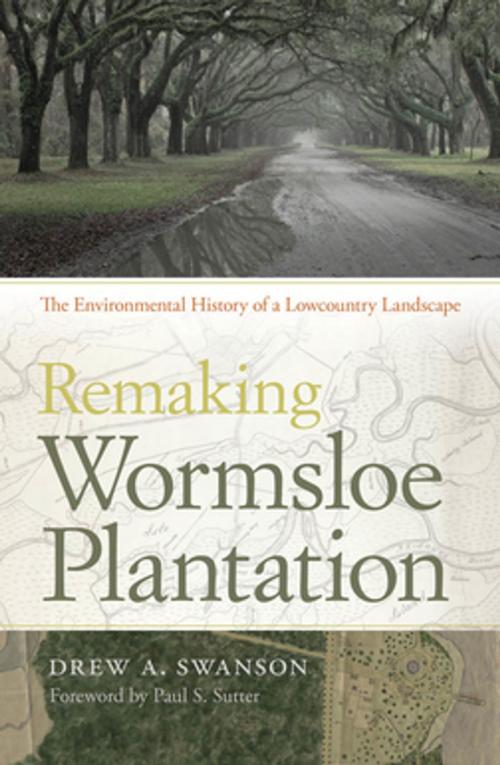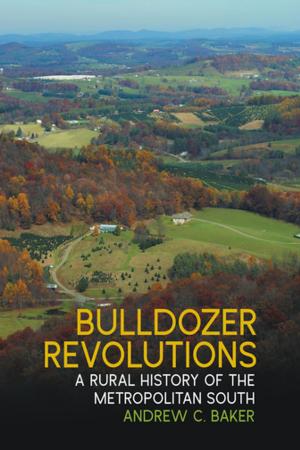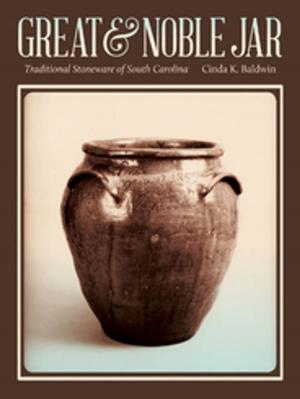Remaking Wormsloe Plantation
The Environmental History of a Lowcountry Landscape
Nonfiction, Science & Nature, Nature, Environment, Environmental Conservation & Protection, History| Author: | Drew A. Swanson | ISBN: | 9780820343778 |
| Publisher: | University of Georgia Press | Publication: | April 1, 2012 |
| Imprint: | University of Georgia Press | Language: | English |
| Author: | Drew A. Swanson |
| ISBN: | 9780820343778 |
| Publisher: | University of Georgia Press |
| Publication: | April 1, 2012 |
| Imprint: | University of Georgia Press |
| Language: | English |
Why do we preserve certain landscapes while developing others without restraint? Drew A. Swanson’s in-depth look at Wormsloe plantation, located on the salt marshes outside of Savannah, Georgia, explores that question while revealing the broad historical forces that have shaped the lowcountry South.
Wormsloe is one of the most historic and ecologically significant stretches of the Georgia coast. It has remained in the hands of one family from 1736, when Georgia’s Trustees granted it to Noble Jones, through the 1970s, when much of Wormsloe was ceded to Georgia for the creation of a state historic site. It has served as a guard post against aggression from Spanish Florida; a node in an emerging cotton economy connected to far-flung places like Lancashire and India; a retreat for pleasure and leisure; and a carefully maintained historic site and green space. Like many lowcountry places, Wormsloe is inextricably tied to regional, national, and global environments and is the product of transatlantic exchanges.
Swanson argues that while visitors to Wormsloe value what they perceive to be an “authentic,” undisturbed place, this landscape is actually the product of aggressive management over generations. He also finds that Wormsloe is an ideal place to get at hidden stories, such as African American environmental and agricultural knowledge, conceptions of health and disease, the relationship between manual labor and views of nature, and the ties between historic preservation and natural resource conservation. Remaking Wormsloe Plantation connects this distinct Georgia place to the broader world, adding depth and nuance to the understanding of our own conceptions of nature and history.
Why do we preserve certain landscapes while developing others without restraint? Drew A. Swanson’s in-depth look at Wormsloe plantation, located on the salt marshes outside of Savannah, Georgia, explores that question while revealing the broad historical forces that have shaped the lowcountry South.
Wormsloe is one of the most historic and ecologically significant stretches of the Georgia coast. It has remained in the hands of one family from 1736, when Georgia’s Trustees granted it to Noble Jones, through the 1970s, when much of Wormsloe was ceded to Georgia for the creation of a state historic site. It has served as a guard post against aggression from Spanish Florida; a node in an emerging cotton economy connected to far-flung places like Lancashire and India; a retreat for pleasure and leisure; and a carefully maintained historic site and green space. Like many lowcountry places, Wormsloe is inextricably tied to regional, national, and global environments and is the product of transatlantic exchanges.
Swanson argues that while visitors to Wormsloe value what they perceive to be an “authentic,” undisturbed place, this landscape is actually the product of aggressive management over generations. He also finds that Wormsloe is an ideal place to get at hidden stories, such as African American environmental and agricultural knowledge, conceptions of health and disease, the relationship between manual labor and views of nature, and the ties between historic preservation and natural resource conservation. Remaking Wormsloe Plantation connects this distinct Georgia place to the broader world, adding depth and nuance to the understanding of our own conceptions of nature and history.















